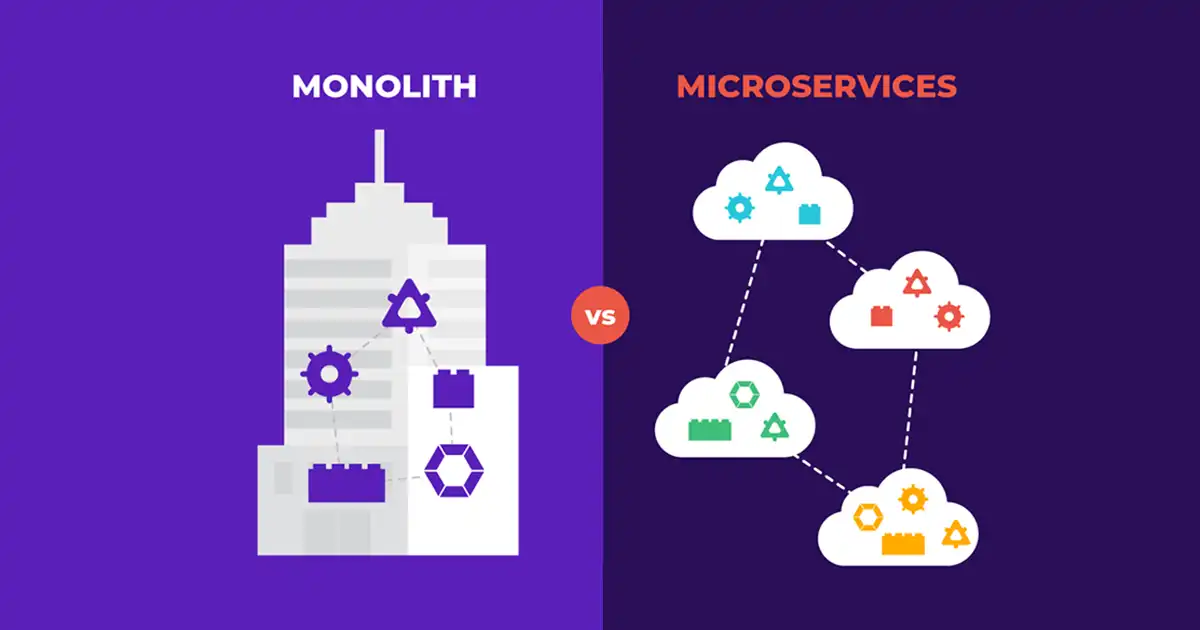Drive profitability with composable commerce for B2C brands

Discover how composable commerce for B2C businesses can improve customer experiences, reduce costs and make informed decisions. Request a free demo to elevate your e-commerce with Contentstack.
Highlights
You’ll learn about what composable commerce can help you achieve:
- Superior decision-making: Experiment with components and leverage real-time insights
- Cost efficiency: Tailored spending, decreased overheads, improved ROI
- Reasons for shifting to a composable approach: Differentiation, long-term cost savings and ability to meet specialized needs
- Best practices: Agile development, microservices and omnichannel strategies
Go composable today to change your business strategy and customer experience for good
Keep reading to learn more!
Are you impressed with the latest digital trends capturing the entire e-commerce industry—composable commerce? You have heard many e-commerce experts and even your in-house team advocating it.
For a long time, delivering exceptional customer experiences was the work of only a single vendor that housed all the components, including payment processing checkouts and subscriptions, under one roof. As you cannot customize these platforms, you provide a customer experience like your competitor's. The inability to provide a unique experience pushes your growth backward.
That’s where composable commerce for B2C enters. This modern tech stack flips the traditional e-commerce platform over its head. Now, creating a tech stack comprising the best-of-breed solutions is possible.
With 70% of large and medium enterprises aiming to have a composable approach as key criteria by the end of 2024, using a modular approach provides superior customer experiences.
There’s more to a composable approach than using best-of-breed components. Let’s explore what else it offers.
What is composable commerce for B2C?
Composable commerce for B2C is a modular development approach that chooses the best-of-breed solutions and combines different components to create flexible, agile and scalable custom applications for your retail store. These components are called packaged business capabilities (PBCs). Each PBC caters to a specific business functionality and is usually a third-party integration. These PBCs work as the building blocks for your B2C e-commerce store.
For example, a PBC could be a payment processing gateway or an order management system.
Composable commerce uses advanced approaches like MACH architecture (Microservices, APIs, cloud-native architecture and headless) and JAMstack (JavaScript, API and Markup) to adapt to changing market dynamics.
Start your free trial with Contentstack today. Transform your brand's digital presence with Contentstack's open MACH architecture and industry-leading technology. Witness a significant reduction in publishing and development time, and elevate your content management. Start your free trial now.
How does composable commerce differ from traditional commerce?
Feature | Composable commerce | Traditional commerce |
Architecture | Based on microservices, businesses build a customized stack of commerce services. | Monolithic architecture offers a predefined set of features in a single, integrated package. |
Scalability | Highly scalable because of its modular nature. | Scalability is limited by the underlying platform’s capability, which requires a complete overhaul for significant changes |
Customization | Offers unprecedented customization options, enabling businesses to tailor every aspect of their commerce platform. | Customization is often limited, complex and costly because of the platform's rigid structure. |
Integration | Thanks to the API-first approach, seamless integration with third-party services is possible. | Integrations need extensive development work. |
Cost efficiency | Costs are aligned with business needs, avoiding unnecessary expenditure on unneeded features. | Needs upfront investment and ongoing costs, regardless of the features used. |
Benefits of composable commerce for B2C
Gives you more freedom
Commonly used monolithic platforms like WordPress force you to use plugins from their marketplace, often leaving you with limited tools outside their ecosystem. In short, you face vendor lock-in, which prevents you from scaling up your e-commerce solutions. With composable commerce solutions like Contentstack, you choose the PBC from whichever third-party vendor you want and connect them using the application programming interface (API).
Contentstack allows you to mix and match various levels of tools. This helps you pay for features you use and less for software functionality you won’t use.
Contentstack: Your partner in scaling digital experiences. Twice named a Leader in Forrester's composable DXP award, Contentstack offers an innovative approach to DXP. Experience our 100% microservices architecture and API coverage that allows instant scalability. Start your free trial today.
Improves customer experience
Composable commerce solutions use the best-of-breed solutions to break down data into silos across various digital touchpoints. When you have a holistic understanding of your customers' preferences, behavior and interactions, you provide a hyper-personalized experience that increases customer experience.
For instance, if your customers encounter friction when using your business processes, like the checkout feature, you can choose the best vendor to streamline their purchasing journey. This will reduce your cart abandonment rate.
Provides competitive advantage
When you integrate a headless content management system (CMS), you outsmart competitors stuck in rigid commerce platforms. You win customers' trust by adapting and responding to customer demands in real time. A modular approach reduces development time and increases the time to market for a new product.
Enhances flexibility and scalability
Whether you want to scale your business operations or add new functionalities, composable commerce meets your evolving business requirements. This modular approach allows you to expand your operations and tech stack, giving your business the desired flexibility.
What’s more interesting is you can scale them independently while reducing the risk of overhauling the entire system.
You can choose and configure components to meet your business and strategic objectives. When you select the best solutions on the market, you deliver unparalleled experiences.
Better decision-making
Besides delivering superior customer experiences, composable commerce architecture helps you make better decisions. You experiment with various commerce components and configurations to identify what resonates with your target audience. As a result, you make data-driven decisions based on real-time insights and feedback rather than your intuitions.
Decreases cost
Most B2C e-commerce solutions, especially those in their nascent stage, operate within a tight budget constraint. They select and divide funds to use within their available budget. That’s why it's beneficial to move to a composable commerce solution.
Using composable architecture makes it easier to develop what you need. You don’t pay for the entire software if you need a single modular component.
Here’s how composable commerce reduces your unnecessary expenses:
- Customized spending
- Reduces maintenance costs
- Reduces IT overheads
- Improves return on investment (ROI)
- Customizes your spendings
Case study: How did Contenstack help LADbible group decrease their cost?
The LADbible Group transitioned from an in-house content system to Contentstack to support their complex and rapidly changing content needs. Contentstack's flexibility allowed LADbible to innovate, such as developing live articles through an internal hackathon. As the company used APIs and SDks, it improved their developers' efficiency and content creators decreased their editorial process time by 50%.
The collaboration and support from Contentstack have been highlighted, creating a productive partnership. With Contentstack, LADbible launched new content types cost-effectively, managed 55 distinct brand sites and doubled the speed of its editorial process.
After using Contentstack, Tom McGiveron, Lead Software Engineer, said:
“Contentstack gives us a solid base that’s easily extensible. We’re now able to turn out new features quickly and implement them in an elegant way.”
Read the full case study here.
Why should you shift to a composable commerce strategy?
What’s encouraging businesses to move from traditional models to modular architecture?
Differentiation
From Amazon and Home Depot to Etsy and Squarespace, the B2C e-commerce landscape is competitive. It's hard to stand out without any critical factor that makes you different. Moving to a headless CMS provides superior experiences to your business buyers.
Rising cost
While composable commerce may not be cheaper initially, it provides significant cost-saving in the long run. Maintaining your composable commerce website is cheaper than maintaining a traditional platform. Also, you pay for features you use—nothing more, nothing less.
Specialized business needs
Going composable ensures you meet your business’s specific needs. For instance, if you plan to change to a new payment processing method, your traditional e-commerce platform may not allow you. But, when you use Contentstack, you add a new payment gateway to your existing online store.
Moving to a composable architecture is the best option to meet your specialized business needs.
Adapting to rapid changes
Your digital customers expect instant rewards and offering an up-to-date e-commerce solution with the latest functionalities helps you achieve this goal. One reason for shifting to a composable approach is the ability to add, update or change the composition of your e-commerce store at any time.
Best practices in composable commerce for B2C
To improve your performance, make your customers happy and future-proof your business, use these best practices:
Agile development methodologies
Speed is critical in today's market. By going agile, you can reduce the time it takes to market your new products or innovative features. A modular approach increases flexibility, improves business operations, and fulfills customer needs. You can roll out updates or new features based on real feedback, keeping you ahead of the curve.
Use microservices
For composable commerce to work, you need a strong, flexible tech setup. Thanks to microservices, you have a commerce platform where every component works independently. Microservices improve your system's resilience and ensure it's scalable. It becomes easier to update or replace components without affecting your entire system.

Adopting omnichannel strategies
Today, providing an integrated and consistent customer experience is critical. Whether your customers use multiple channels like phones or laptops or walk into a physical store, offering omnichannel shopping experiences sets you apart. Composable commerce helps you integrate and synchronize your services across different platforms.
Future of composable commerce
Looking ahead, composable commerce will reshape how your B2C e-commerce works and functions. With customers demanding customized shopping journeys, you must push for a flexible commerce platform. This allows you to adapt to individual preferences and market trends.
Artificial intelligence, machine learning and IoT technologies will help you analyze data. These technologies will offer personalized customer experiences. Besides that, blockchain will make your online store more secure and transparent.
FAQs
What is composable commerce?
Composable commerce is a flexible and modular approach to building e-commerce platforms using microservices and APIs.
What is B2C commerce?
Business-to-consumer commerce is selling goods and services online from multiple vendors to consumers.
Why is composable commerce better than traditional commerce platforms?
Composable commerce offers greater flexibility, scalability and cost efficiency than a traditional platform. This approach allows businesses to tailor their tech stack to meet their changing customer expectations and needs.
What is the difference between headless and composable storefronts?
Headless commerce separates the front and back ends, while composable commerce involves assembling a custom tech stack from various services and components.
Learn more
Composable commerce is bringing a digital transformation in how your B2C e-commerce solution works. Using a digital commerce approach, you meet current customer and market demands. You remain agile enough to adapt to future trends
Request a free demo today to learn how composable commerce delivers a change to your B2B e-commerce solution.
About Contentstack
The Contentstack team comprises highly skilled professionals specializing in product marketing, customer acquisition and retention, and digital marketing strategy. With extensive experience holding senior positions in notable technology companies across various sectors, they bring diverse backgrounds and deep industry knowledge to deliver impactful solutions.
Contentstack stands out in the composable DXP and Headless CMS markets with an impressive track record of 87 G2 user awards, 6 analyst recognitions, and 3 industry accolades, showcasing its robust market presence and user satisfaction.
Check out our case studies to see why industry-leading companies trust Contentstack.
Experience the power of Contentstack's award-winning platform by scheduling a demo, starting a free trial, or joining a small group demo today.
Follow Contentstack on Linkedin
Share on:





.jpg?format=pjpg&auto=webp)

